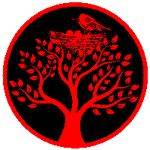Hi everybody,
I have no particular or personal interest in pre-dating or post-dating that kind of tsuba we usually refer as Kanayama. But some reputed members in this forum have clearly stated that dating a Kanayama tsuba to mid-Muromachi "makes little sense in terms of cultural context" and advise "not take Sasano as any form of orthodoxy". Well, I don't indulge in any form of fascination for authoritative ipse dixit, but I'm not able to see new facts here. The Azuchi-Momoyama period is undoubtedly a very important political turning point in Japanese history, but lasted just 30 years, and in such short time is quite unlikely that the cultural context changed so abruptly. What I'm trying to say is that the burden of evidence should be sustained by the supporters of the Momoyama hypothesis.
Bye, Mauro


